
Jacob Xavier Vermoelen or Jacob Xaver Vermoelen [1] (c. 1714 - 1784) was a Flemish painter of still lifes and game pieces who was active in Rome. [2]

Jacob Xavier Vermoelen or Jacob Xaver Vermoelen [1] (c. 1714 - 1784) was a Flemish painter of still lifes and game pieces who was active in Rome. [2]
Vermoelen was born in Antwerp, where he trained under Pieter Snyers. He became a master of the Antwerp Guild of Saint Luke in 1733. Nothing is recorded about his activity in Antwerp. He is recorded as executing a number of paintings in Rome in 1748. In Rome he appears to have enjoyed high patronage as is demonstrated by two still lifes that he made for the renowned art collector Cardinal Silvio Valenti Gonzaga. [3]
He died in Rome. [2]

Only about 14 or so of Vermoelen's works are known. These all depict dead birds and are all dated between 1748 and 1755. [3] He was influenced by the Antwerp painter David de Coninck who was known for his game pieces. [2]
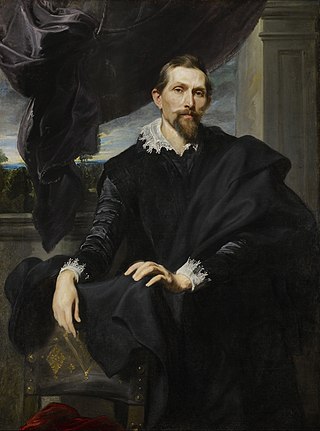
Frans Snyders or Frans Snijders was a Flemish painter of animals, hunting scenes, market scenes, and still lifes. A versatile artist, his works depict all sorts of foods, utensils, and tableware and wide assortment of animals. He was one of the earliest specialist animaliers and he is credited with initiating a wide variety of new still-life and animal subjects in Antwerp. His hunting scenes and still lifes engage the viewer with their dramatic and dynamic effects. He was a regular collaborator with leading Antwerp painters such as Peter Paul Rubens, Anthony van Dyck, Jacob Jordaens, and Abraham Janssens.

Jan Fijt, Jan Fijt or Johannes Fijt was a Flemish Baroque painter, draughtsman and etcher. One of the leading still life and animaliers of the 17th century, he was known for his refined flower and fruit still lives, depictions of animals, garland painting and lush hunting pieces, and combinations of these subgenres, such as game, flowers and fish under a festoon of flowers. He was probably the master of the prominent Pieter Boel, who worked in a style very similar to that of Fyt.

Adriaen van Utrecht was a Flemish painter known mainly for his sumptuous banquet still lifes, game and fruit still lifes, fruit garlands, market and kitchen scenes and depictions of live poultry in farmyards. His paintings, especially the hunting and game pieces, show the influence of Frans Snyders. The two artists are considered the main inventors of the genre of the pronkstillevens, i.e. still lifes that emphasized abundance by depicting a diversity of objects, fruits, flowers and dead game, often together with living people and animals. Van Utrecht also painted a number of flower still lifes. He was a regular collaborator with leading Antwerp painters who had been pupils or assistants of Peter Paul Rubens, such as Jacob Jordaens, David Teniers the Younger, Erasmus Quellinus II, Gerard Seghers, Theodoor Rombouts, Abraham van Diepenbeeck and Thomas Willeboirts Bosschaert.
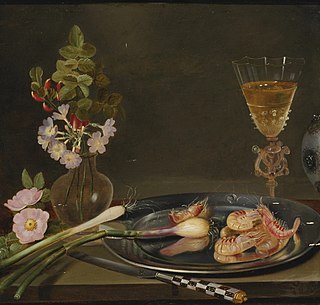
Frans Ykens was a Flemish still life painter active in Antwerp and Brussels in the 17th century. He is mainly known for his flower pieces and fruit still lifes and also painted banquet pieces, pronkstillevens, garland paintings and larger game pieces.

Clara Peeters was a Flemish still-life painter from Antwerp who worked in both the Spanish Netherlands and Dutch Republic.
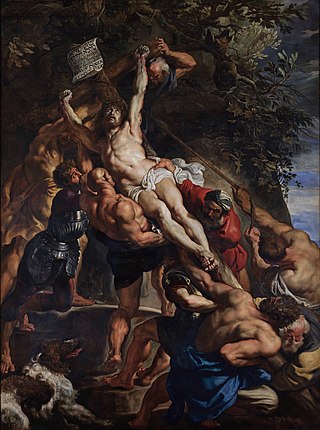
Flemish Baroque painting was a style of painting in the Southern Netherlands during Spanish control in the 16th and 17th centuries. The period roughly begins when the Dutch Republic was split from the Habsburg Spain regions to the south with the Spanish recapturing of Antwerp in 1585 and goes until about 1700, when Spanish Habsburg authority ended with the death of King Charles II. Antwerp, home to the prominent artists Peter Paul Rubens, Anthony van Dyck, and Jacob Jordaens, was the artistic nexus, while other notable cities include Brussels and Ghent.

Jacob Foppens van Es, Jacob Fopsen van Es or Jacob van Es was a Flemish Baroque painter known for his still lifes mainly of food and occasionally flower paintings. He collaborated with other artists on garland paintings. Together with Osias Beert and Clara Peeters, he was one of the leading representatives of the first generation in Flemish still-life painting.

David de Coninck or David de Koninck, also known as Rammelaer was a Flemish painter who specialised in still lifes and landscapes with animals and hunting scenes. Recognised as a leading animal painter, de Coninck was able to develop an international career which caused him to work for extended periods in Paris, Rome and Vienna.

Jan van den Hecke or Jan van den Hecke the Elder (1620–1684) was a Flemish Baroque painter, draughtsman, printmaker and engraver, mainly known for his still lifes, landscapes and battle scenes. After training in Antwerp, he spent time in Rome, where he had important patrons. After his return to Flanders, he worked for a while in Brussels, probably painting flower still lifes for Archduke Leopold Wilhelm of Austria, the Austrian governor of the Spanish Netherlands, before returning to work in Antwerp.

Christoffel van den Berghe was a Flemish-born Dutch Golden Age painter of landscapes and flower still lifes.

Pieter Snyers or Peter Snijers was a Flemish art collector, painter, draughtsman and engraver. He practised a wide variety of genres, including portraits, genre painting, still life and landscape painting. His masterpiece is a series of 12 paintings, each representing a different month of the year.

Carstian Luyckx, also known as the Monogrammist KL, was a Flemish painter and draughtsman who specialized in still lifes in various subgenres including flower still lifes, fruit still lifes, fish still lifes, pronkstillevens, vanitas still lifes, hunting pieces and garland paintings. He also painted animals and a few genre scenes. After starting his career in Antwerp he is believed to have worked later in France.

Pieter Andreas Rijsbrack was a Flemish painter of still lifes and landscapes who was active in England in the first half of the 18th century. He is particularly known for launching the vogue of topographical views of English country houses and gardens. He was the older brother of the sculptor John Michael Rysbrack.

Jacob van der Kerckhoven, known in Italy as Giacomo da Castello, was a Flemish painter. After training in Antwerp, he was active in the Veneto region in Italy. He was one of the most prominent still life and animal specialists active in the Veneto territory around the start of the 18th century.

Gerard Rijsbrack or Gerard Rysbrack was a Flemish painter of still lifes, game pieces, hunting scenes and mythological scenes. He first worked in England and later in Paris where he received royal commissions. He was the younger brother of the sculptor John Rysbrack, one of the leading sculptors in England around the mid-18th century.

Joannes Hermans, called Monsú Aurora, was a Flemish painter of animals and still lifes of game, fruit and flowers who worked in Italy and Antwerp where he contributed to the development of the Baroque still life genre.
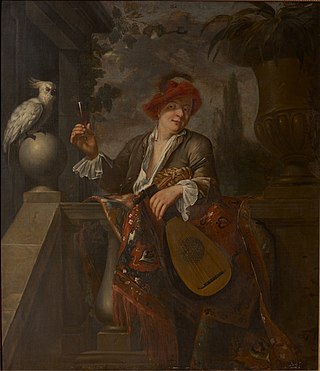
François Xaver Henri Verbeeck or Frans Verbeeck was a Flemish painter known mainly for his genre scenes and paintings of merry and gallant companies.
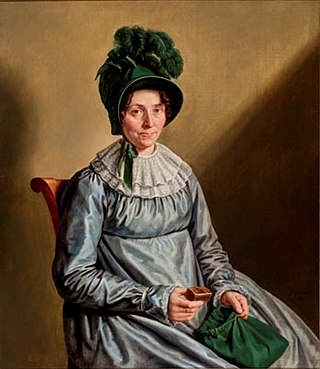
François Xavier Joseph Jacquin or Frans Jaquin was a Flemish painter and draughtsman known for his portraits, still lifes and landscapes. He was in demand as a portrait painter of religious dignitaries, the nobility and the bourgeoisie. As a still life painter he created game pieces and trompe-l'œil still lifes of game birds.

Bernaert de Bridt, Bernaert de Brit or Bernardus de Bridt, was a Flemish painter and draughtsman who specialized in still lifes. He was also active as a brewer. He is particularly known for his still lifes of dead game, hunting pieces, live animals, sumptuous still lifes and genre scenes with a prominent still life component. He was active in Antwerp.

Pieter Hardimé was a Flemish painter known for his paintings of flowers. He trained in Antwerp and later moved to the Dutch Republic where he worked in The Hague. He was active as a decorative painter of flowers for wall and ceiling decorations, often in collaboration with Mattheus Terwesten.